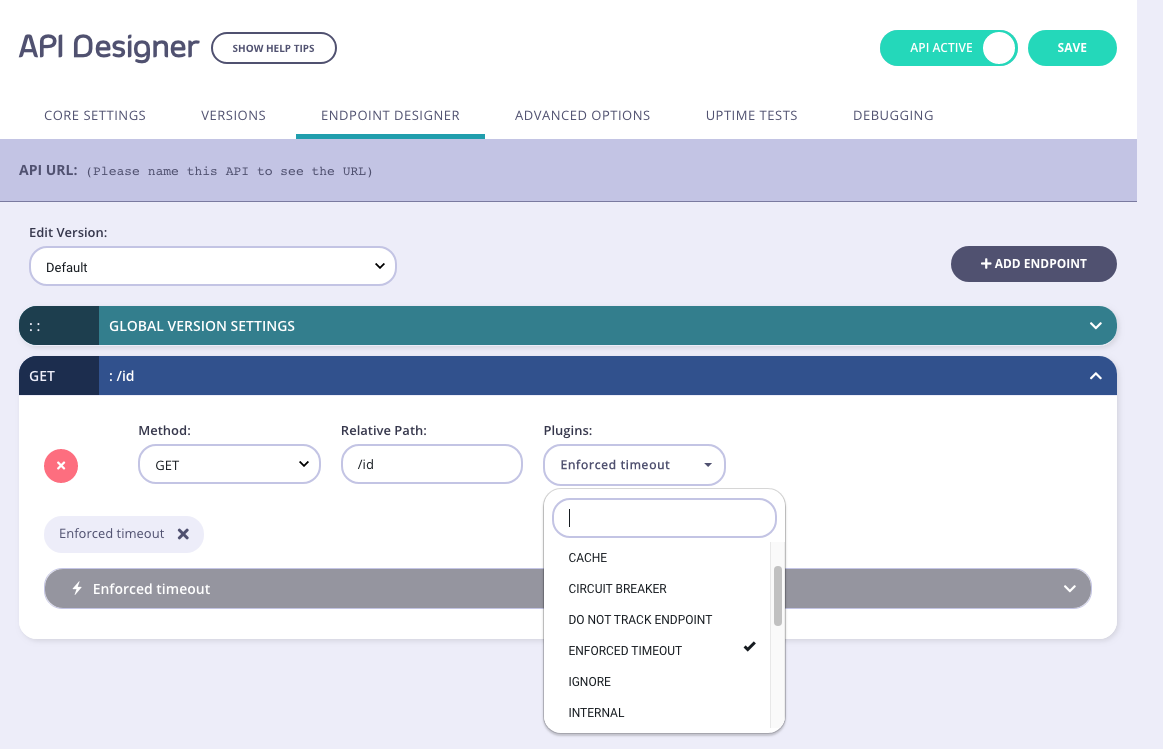Using the Enforced Timeout middleware with Tyk Classic APIs
Last updated: 2 minutes read.
Tyk’s enforced timeout middleware is configured at the endpoint level, where it sets a limit on the response time from the upstream service. If the upstream takes too long to respond to a request, Tyk will terminate the request and return 504 Gateway Timeout to the client.
When working with Tyk Classic APIs the enforced timeout is configured in the Tyk Classic API Definition. You can do this via the Tyk Dashboard API or in the API Designer.
If you’re using the newer Tyk OAS APIs, then check out the Tyk OAS page.
Configuring an enforced timeout in the Tyk Classic API Definition
To configure an enforced timeout you must add a new hard_timeouts object to the extended_paths section of your API definition.
It has the following configuration:
path: the endpoint pathmethod: the endpoint HTTP methodtimeout: the duration of the upstream request timer
For example:
{
"hard_timeouts": [
{
"path": "/status/200",
"method": "GET",
"timeout": 3
}
]
}
In this example the enforced timeout has been configured to monitor requests to the GET /status/200 endpoint. It will configure a timer that will expire (timeout) 3 seconds after the request is proxied to the upstream service.
If the upstream response is not received before the expiry of the timer, that request will be terminated and Tyk will return 504 Gateway Timeout to the client.
Configuring an enforced timeout in the API Designer
You can use the API Designer in the Tyk Dashboard to configure the enforced timeout middleware for your Tyk Classic API by following these steps.
Step 1: Add an endpoint for the path and select the Enforced Timeout plugin
From the Endpoint Designer add an endpoint that matches the path for which you want to deploy the enforced timeout. Select the Enforced timeout plugin.

Step 2: Configure the timeout
Then enter the timeout to be enforced for the endpoint (in seconds):

Step 3: Save the API
Use the save or create buttons to save the changes and activate the middleware.